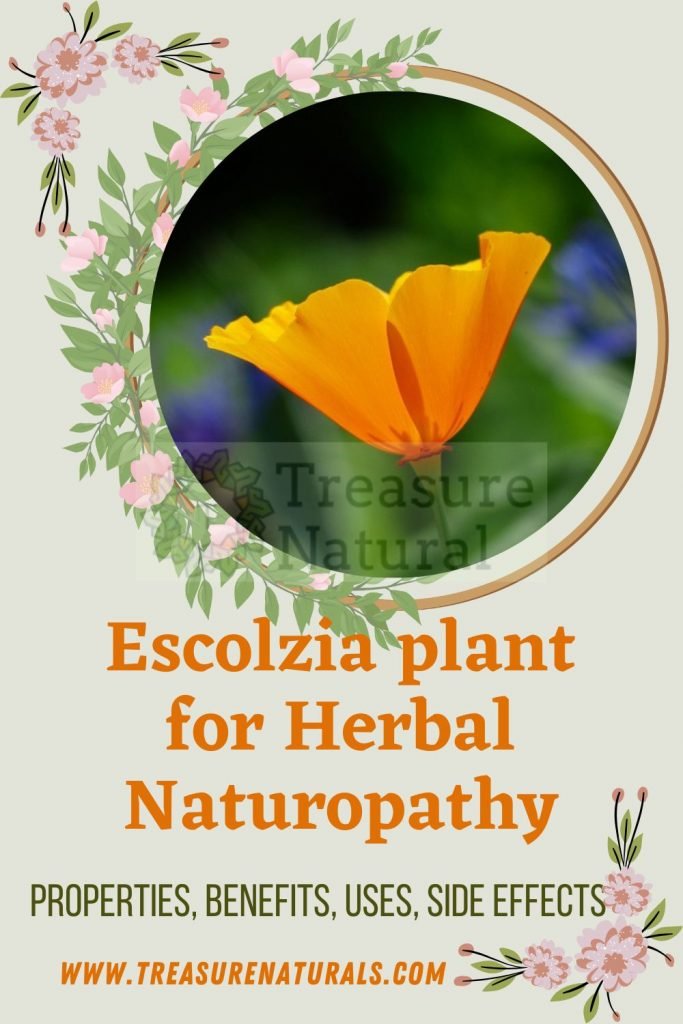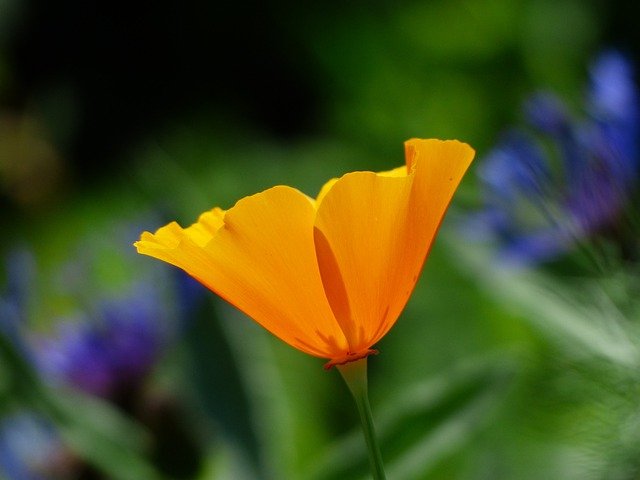
Escolzia (Echoltzia californica) is a plant of the Papaveraceae family. Known for its sedative and hypno- inducing properties, it is useful against headaches, mood and sleep disorders, and high blood pressure. Let’s find out better.
Properties of the escolzia
The aerial parts of the escolzia (stem, flower) contain alkaloids (0.5%), phytosterols, carotenoids and flavonoids which give the plant sedative and hypno- inducing properties (which promote sleep). Alkaloids act on the one hand on cardiac activity, lowering its pressure; on the other hand on the central nervous system, reducing the activity of the cells of the cerebral cortex, as they induce muscle relaxation and stimulate sleep. The action of the plant decreases the period of falling asleep and produces the maintenance of a good quality of sleep, all night long, avoiding sudden awakenings.
The action is due to the presence of alkaloids (benzylisoquinolines and benzophenanthridines) and in general to the phytocomplex, that is the set of active ingredients, among which protopin stands out. The use of escolzia is therefore indicated in case of anxiety, stress, sleep disturbances (insomnia, nocturnal awakenings), psychosomatic disorders, irritability, bending of mood, psychic pain, nervousness.
The plant also has an antispasmodic and analgesic action, due to the presence of chelidonia, which acts as a spasmolytic especially at the level of the gastrointestinal system; it is useful in nocturnal cramps (flavonoids also improve microcirculation circulation), painful syndromes, headaches, colic and biliary spasms, cough (as a sedative) and neurovegetative dystonia.
How to use
INTERNAL USE
INFUSION: 1 level spoon of top escolzia, 1 cup of water
Pour the tops into boiling water, turn off the heat, cover and leave to infuse for 10 min. Filter the infusion and drink it, to take advantage of the antispasmodic and sedative action against insomnia
Mother tincture of escolzia : 20-30 drops in a little water 30 min. before going to sleep.
1 or 2 dry extract tablets or capsules 30 min. before going to sleep.
Contraindications of escolzia
L’ escolzia is not recommended in children, pregnant and breastfeeding. Better to avoid its use in case of cardiovascular problems (eg hypotension, bradycardia), as it can influence cardiac activity by lowering the blood pressure parameters.
It is contraindicated in the case of simultaneous intake of psychotropic drugs, tranquilizers and sedatives, or synthetic antihistamines, to avoid a possible dangerous enhancement of the sedative action and side effects of the drugs.
Description of the plant
Perennial herbaceous plant grown as an annual. It has prostrate stems that widen to form 40-50 cm high bushes, of a green-glaucous color.
The leaves are alternate, petiolate, jagged, of a green-ashy color, The single flowers have 4 free obovate petals, of white, yellow or orange color, with varieties of color tending to bright red. The small and numerous seeds are contained in a 4-5 cm long pod.
The habitat of the escolzia
Native to Arizona, California and Oregon and Mexico, it grows mainly in coastal dunes and arid valleys near the sea, on soft soil, mixed with sand, but also adapts to clayey soils as long as they are well drained.
It is currently grown in many other warm-temperate countries. It prefers sunny exposures, it does not survive the cold.
Background

The plant was first collected near San Francisco by Adelbert von Chamisso, who wanted to dedicate this discovery to his travel companion and head of the scientific expedition, JF Eschscholtz, a Russian botanist and entomologist who first introduced it to Europe at the beginning of 1800, as an ornamental botanical species, due to the beauty of its colorful flowers.
The American Indians and the first settlers of North America used the leaves as a legume, boiled or cooked on hot stones. As a medicine it was used in intestinal and biliary colic, in toothache and also to reduce lactation; externally, in poultices, in ulcerations.
Today the plant is also called “California poppy“, due to its belonging to the same family as the poppy and its widespread distribution in the California state. Here for many years it has even been the official flower and celebrated on April 6 every year: the “Californian Poppy Day“.






